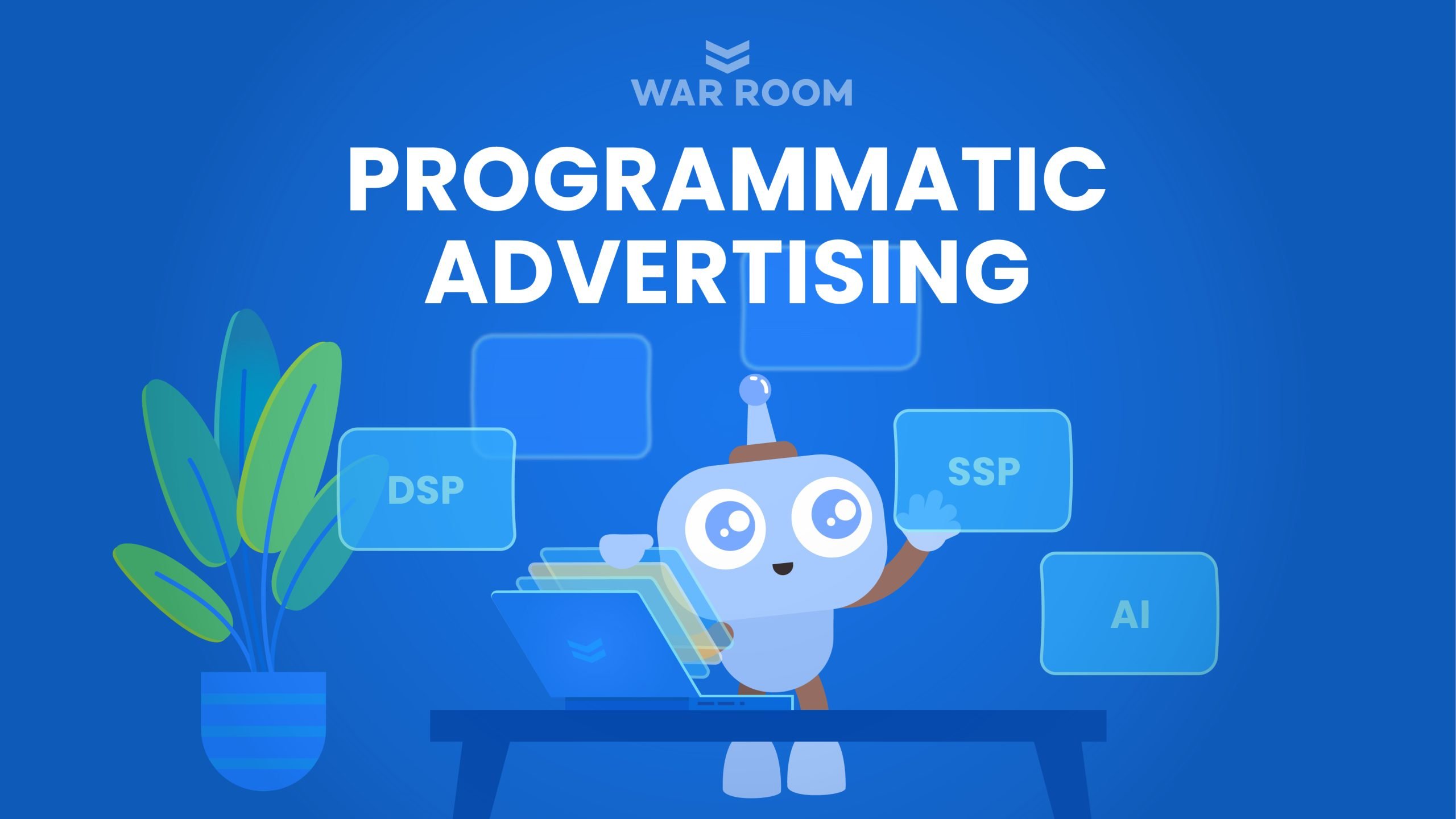As the digital landscape evolves, so must your strategies. With advertising spend projected to hit $235.7 billion in 2025—despite a slight deceleration to 8.9% growth—marketers and agencies are gearing up for a pivotal year. Staying on top of emerging trends is no longer optional; it’s the key to survival in this fast-paced industry.
From the unstoppable rise of AI-driven campaigns to hyper-personalized content that speaks directly to individual users, 2025 is set to reshape how we think about digital advertising. Adapting to these trends will give you the edge needed to connect with your audience more meaningfully, boost ROI, and ensure your strategies stay sharp.
In this article, we’ll explore the trends that are not just hot topics but essential tools for thriving in tomorrow’s digital market. Get ready to future-proof your campaigns and outpace the competition.
The Rise of AI-Powered Advertising
AI is revolutionizing the way digital ads are crafted, delivered, and optimized, taking campaign performance to levels never seen before. In an AI-driven world, automation becomes the name of the game, allowing digital ads to respond in real-time—adjusting pay-per-click bids automatically and squeezing every bit of value out of your ad spend. The result? Greater precision, higher flexibility, and a massive boost in campaign efficiency.
AI-powered algorithms take personalization to new heights by analyzing user behavior and preferences at lightning speed, tailoring content to each individual. This approach not only boosts engagement but also dramatically increases the likelihood of a user showing interest in your ad.
Platforms like Google Ads and Meta Ads are already at the forefront, using machine learning to sharpen targeting strategies with Dynamic Creative Optimization. Just look at Netflix and Amazon: their AI capabilities sift through mountains of data to deliver ultra-relevant ads that truly resonate with users. By adopting AI, advertisers aren’t just enhancing their campaigns—they’re building stronger, more personalized connections with their audience.
The Dominance of Video and Interactive Content
Video and interactive content are important elements in engaging and retaining audience interest in the ever-evolving digital marketing landscape. This trend is highlighted by the rapid rise of short videos on TikTok, YouTube Shorts, and Instagram Reels. These platforms have completely transformed the way content is consumed, prioritizing brief, interesting, and visually captivating styles. As a result, brief videos have become a vital element of contemporary marketing plans. They provide brands with an opportunity to convey powerful messages in a fast and effective manner.
Benefits of Video and Interactive Content
- Video and interactive material enthrall audiences better than still advertisements, resulting in greater engagement levels.
- Short-form videos and AR experiences increase brand recollection and generate impactful engagements.
- Increased conversion rates often occur when shoppable videos make the journey from inspiration to purchase more efficient.
- Customized features such as polls and AR create unique user experiences, strengthening the brand connection.
- Compelling material has a higher chance of being distributed, increasing outreach, and expanding brand exposure to a larger audience.
Privacy-First Advertising and Data Ethics
Privacy-first advertising and data ethics are gaining importance as digital advertising evolves. Consequently, stricter data privacy regulations like GDPR and CCPA compliance requirements are reshaping advertising tactics by imposing stringent rules on data collection and use. Advertisers must adapt by exploring cookie-free alternatives, such as context-based targeting and direct data collection from users.
Furthermore, it is crucial to uphold consumer confidence by promoting trust with transparent and ethical advertising practices. Adopting these changes not only guarantees adherence to rules but also boosts brand reputation. This makes it a key priority for marketing experts and digital marketers in the changing environment.
The Emergence of the Metaverse
The metaverse is changing the landscape of digital advertising by providing brands with fresh opportunities to develop immersive virtual experiences. As businesses enter the digital landscape, they are creating interactive advertisements that integrate smoothly into virtual surroundings.
Those who are quick to embrace new technologies stand to gain from higher levels of brand recognition and interaction. However, calculating the return on investment in these innovative areas can be challenging.
For example, companies like Nike have effectively introduced virtual stores on metaverse platforms, involving users in interactive product experiences. Although there is potential in virtual campaigns, accurately measuring their impact remains a challenge. This underscores the importance of using advanced analytics to assess effectiveness and inform future strategies.
The Power of Influencer Marketing Evolution
The transformation of influencer marketing is changing how brands engage with audiences. Moving away from well-known celebrities, businesses are now opting for micro and nano influencers for their genuine and affordable impact.
These micro-influencers frequently have smaller but more engaged and specialized followers, forming authentic relationships that bigger influencers might not have.
Additionally, influencer marketing is becoming more focused on data, enabling brands to improve their campaigns through specific metrics and measurable results.
New developments include virtual influencers and AI-created characters, which are attracting attention and sparking unique interactions in innovative ways.
This change not only improves campaign results but also presents fresh opportunities for creativity and engagement with the audience.
Innovations in Programmatic Advertising
Programmatic advertising is undergoing a rapid transformation, fueled by advancements in automation, omnichannel strategies, and real-time performance tracking. AI is revolutionizing media buying, allowing for more precise and efficient ad placements that hit the mark every time. This automation means less manual effort and more accurate targeting, ensuring your ads are seen by the right people at the right moment.
What’s more, programmatic’s expansion across multiple platforms creates a seamless omnichannel experience, boosting consumer engagement and increasing brand visibility. AI and machine learning play a pivotal role in enhancing performance monitoring, providing deeper insights into campaign effectiveness and enabling real-time adjustments that keep your ads on track for success.
For marketing professionals and agencies, these innovations streamline operations, drive better results, and keep you ahead in the competitive landscape.
Social Commerce and Shoppable Ads
Social commerce is transforming platforms like Instagram, Facebook, and TikTok into active e-commerce centers by integrating social interactions with shopping. Brands are integrating direct purchasing options into ads as shoppable content becomes prevalent on evolving platforms, transforming them into marketplaces. As a result of this integration, consumers can easily find and purchase products directly from their social media posts.
This shift is altering consumer behavior, as customers now expect a seamless shopping experience integrated with their social media interactions. Therefore, brands must adjust their strategies to leverage these opportunities, thereby increasing interaction and boosting conversions through social media platforms.
Voice Search and Audio Advertising
The rapid transformation of the digital environment is happening because of voice search and audio advertising. With the rise of voice-commanded ads on platforms like Spotify and podcasts, advertisers can engage customers in a more personalized way. It is essential to prioritize voice search optimization, as it helps brands intercept inquiries and discussions directly, enhancing their presence.
Moreover, audio advertising provides a distinct benefit in capturing the attention of multitasking audiences. It effortlessly blends into their everyday schedules without requiring their complete focus. Incorporating voice search and audio strategies into your campaigns will be essential for staying competitive as trends evolve.
Advanced Analytics and Attribution Models
Advanced analytics and attribution models are crucial for optimizing strategies in the constantly evolving digital advertising industry. For instance, Google Analytics provides valuable insights that enable data-driven decisions, granting a deep comprehension of campaign success and audience behaviors.
Moreover, complex attribution models like multi-touch attribution are becoming more elaborate. These models offer a more thorough understanding of the customer’s experience and the influence of every touchpoint. Live analytics allow marketers to swiftly adjust strategies, ensuring their campaigns stay effective and up to date. Therefore, utilizing these tools guarantees more accurate targeting and efficient ad spending.
Sustainability and Purpose-Driven Advertising
Sustainability and purpose-driven advertising are causing a shift in the digital landscape. Firstly, an increasing number of companies are adopting eco-friendly tactics, such as reducing digital carbon emissions and promoting sustainable goods. Marketing initiatives with a clear mission significantly impact Gen Z, who favor brands that align with their values.
This connection to social and environmental issues boosts brand reputation and fosters stronger brand loyalty. Consumers are more inclined to interact with and back brands that show sincere dedication to important causes. Therefore, incorporating sustainability and purpose into advertising strategies is increasingly necessary for modern marketing achievements.
Conclusion
In 2025, digital advertising will be shaped by advanced personalized AI technology and engaging video content. Additionally, the emergence of the metaverse will play a significant role in shaping the industry. These advancements offer both promising prospects and difficulties for marketing experts and advertising firms. Hence, it is essential to actively incorporate these trends into your plans to stay competitive. Utilizing these innovative developments will enhance your tactics and prepare your brand for future success. Ongoing learning and adaptability will be essential to stay ahead and capitalize on new opportunities as the digital environment evolves.





